
WHAT ARE NGOs DOING TO STOP THE SLAUGHTER OF AFRICA'S ELEPHANTS?

Over the past three years, NGOs have launched multi-million dollar campaigns to highlight the plight of Africa’s elephants and raise funds to halt their slaughter. Yet elephants remain under siege, with some 100,000 elephants lost to poaching in that time alone. Jane Edge navigates the philanthropic world and highlights its wastage, as well as its successes in protecting Africa’s giants.
In September 2013, a high-profile announcement was made in New York about a bold Clinton Global Initiative, bringing together NGOs, governments and concerned citizens to stop the slaughter of Africa’s elephants. Making international headlines, the Initiative pledged $80 million over three years to counteract the elephant crisis with a three-pronged strategy to “stop the slaughter, stop the trafficking, and stop the demand”. However, it emerged that of the $80 million in pledged funds, $78 million comprised the already-funded budgets of over a dozen conservation organisations working in Africa. There was no funding from the Clinton Foundation; indeed, a significant portion was European Union funding that had long been committed to protected areas in Africa. The impact for elephant charities was all in the packaging.
Such is the confusing world of wildlife conservation, where initiatives to save iconic species compete in a game of recognition and power, often completely missing the conservation goal. With hundreds of NGOs proclaiming to protect elephants, how do philanthropists decide who to support? The answer is not easy, and the givers themselves are often motivated by personal goals, simply wishing to feel virtuous with an easy click and credit-card swipe entry on a website. NGO websites encourage this approach: for a few dollars, you can supposedly sponsor an orphaned elephant or equip a park ranger. But how much of the money really goes there?
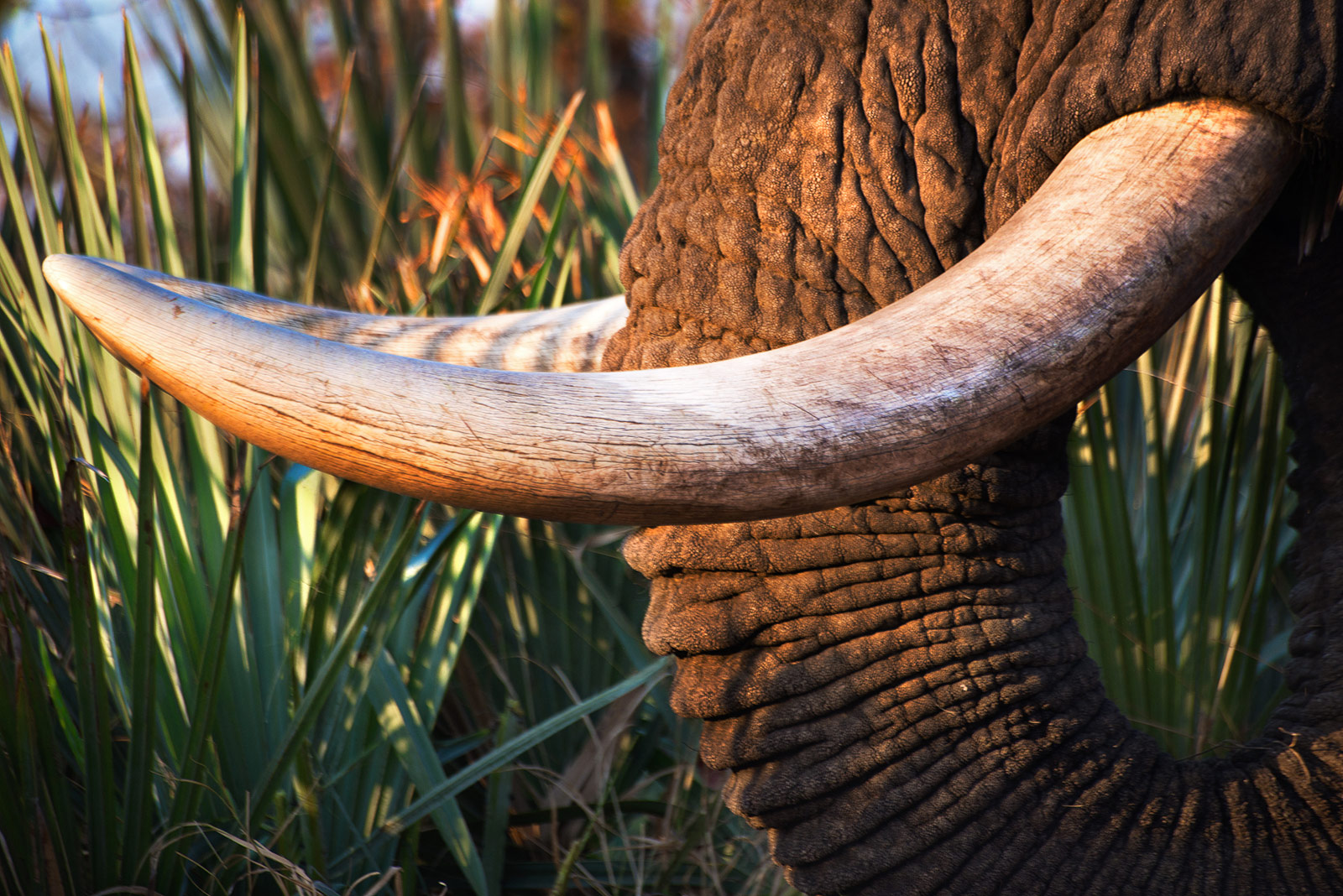
The status of Africa’s elephants
Available research data indicate a population of +- 550,000, but some scientists swayed by the poaching onslaught claim the number is as low as 250,000. Media headlines shout about an apocalypse; they predict that Africa’s elephants will be extinct in 20 years while ignoring the fact that elephants breed at 5% per annum – helping to offset poaching statistics. NGOs benefit from alarmist talk, and every poaching outrage ensures an influx of funds into their coffers. But responsible conservation should present considered facts and opinions, genuine action, and accountability. Africa’s elephants may not be on their way to extinction, but in many regions, they are being lost with breathtaking speed. West Africa is almost devoid of elephants, and a huge swathe of central Africa has lost its savannah herds. Tanzania and Mozambique are the current elephant-killing fields, and central Africa’s forests are an unseen frontline where the future of the forest elephant is at stake. These are real threats, and an alarmed Western world is responding with shock, anger and unprecedented amounts of funding. Governments, foundations and individuals are desperate to help but are bamboozled by the plethora of headlines and funding options.
If donors want to contribute effectively, the role of different NGOs needs to be understood, their literature examined, and quantifiable results sought. Donors also need to understand the relevance of data – if poaching arrests increase, have anti-poaching efforts become more effective or have poaching pressures increased? Are arrests translating to prosecutions or to bribed releases? If more rangers are deployed, are they being effective or actually contributing to the problem by colluding with poachers? The only real measure of success is an increase in population numbers or the slowing of a downward trend – but accurate statistics have been difficult to establish.
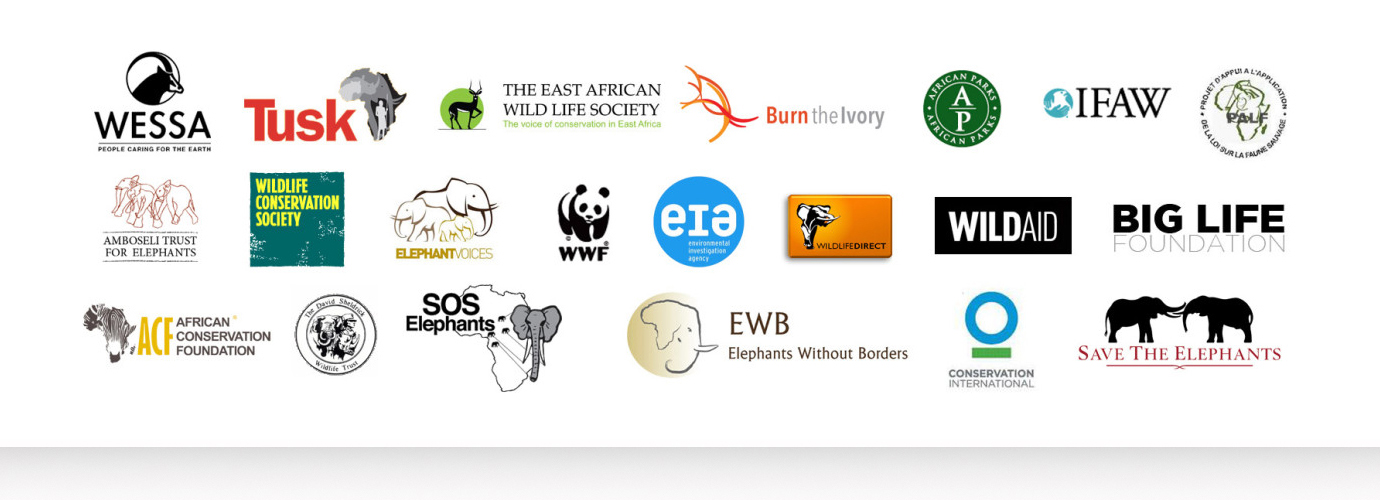
The Global NGOs
Global NGOs dominate Africa’s conservation space with big budgets and high profile marketing campaigns. WWF, WCS, IFAW and CI (World Wide Fund for Nature, Wildlife Conservation Society, International Fund for Animal Welfare and Conservation International) have an annual budget of over $1 billion, with over $100 million spent in Africa. But being a big player also means multiple layers of command, hefty overhead costs and major marketing spend to ensure donations continue. For each donor dollar channelled to these NGOs, at least 15% goes to overheads – 26% in the case of WWF and 34% for IFAW.
Of the global NGOs, Wildlife Conservation Society is credited with doing the most effective work in Africa. Based out of New York’s Bronx Zoo, WCS is at heart a scientific organisation, and much of Africa’s wildlife census work has been conducted by its people. But in recent years, WCS has strived to become more hands-on, taking on the co-management of several protected areas in partnership with governments. In 2012 WCS earned respect for entering into territory where few NGOs will venture – the Niassa National Reserve in northern Mozambique, an area the size of Denmark with one of the most threatened elephant populations in Africa.
Operating in a country with massive corruption, WCS has had its work cut out, compounded by the fact that 35,000 people live in the reserve. Tanzanian poachers cross the border into Niassa, often reportedly aided by officials. Poaching has ravaged Niassa’s elephants, with numbers plummeting from 20,000 in 2009 to 13,000 in 2013. Yet under the helm of South African conservationist Alistair Nelson, WCS has taken on the challenge, investing in anti-poaching efforts that have helped slow the onslaught and lobbying the government for increased penalties – until recently, neither ivory poaching nor trading warranted incarceration in Mozambique. In September 2014, there was a breakthrough when a major poaching gang with 39 recent elephant kills was arrested. But, as in the past, the poachers escaped from prison – indicative of the systemic corruption that makes conviction so difficult. WCS swung its publicity machine into gear, spotlighting the case to ensure that it will be harder in the future for officials to turn a blind eye or take part in corruption.
Mozambique was teeming with elephants a hundred years ago, including some of Africa’s biggest tuskers. Today, Niassa’s 12,000 elephants are the country’s largest population, and their number is dwindling. But thanks to WCS’s presence, Niassa’s beleaguered elephants at least stand a chance.

The Park Managers
NGOs like African Parks, which manage protected areas in partnership with governments, are increasingly attracting donor funds because they are accountable for their actions. In signing formal public-private partnership (PPP) agreements, they secure full management responsibility for a protected area and are held responsible for what happens under their watch.
The Republic of Congo had the foresight to engage in PPPs for three of its national parks – Odzala-Kokoua in partnership with African Parks, and Nouabale-Ndoki and Conkouti-Douli in partnership with Wildlife Conservation Society. Less than five years underway, if these partnerships prove successful, the future of 12-13,000 forest elephants could be secured.


A ranger with captured ivory and poacher’s weapons in Zakouma National Park. ©Babi Prokas/African Parks
Through an amnesty program, poachers are turned into protectors
Odzala-Kokoua has about 9,600 forest elephants, probably the largest population remaining in a single protected area. African Parks has managed Odzala-Kokoua since 2010, and whilst high levels of corruption make it difficult to bring poachers to justice, their conservation efforts are bearing fruit. Odzala’s elephant population is stable, with the effects of any poaching offset by compression as elephants congregate in the safety of the park to avoid threats in surrounding areas. African Parks has been lauded for its poacher-to-protector amnesty programme, which allows poachers to surrender their weapons and apply for work in the park; to date, 45 have been trained and deployed in the field as eco-guards or wildlife monitors. A major achievement was the arrest of a regional ivory kingpin who was sentenced to five years in jail, almost unheard of in Congo’s dysfunctional judicial system.
African Parks is known for its no-nonsense approach, and donors like the fact that almost all incoming funds go towards their efforts on the ground while proceeds from an endowment fund cover most of the overheads.
WCS protects about 3,000 elephants at Noubale-Ndoki and Conkouti-Douli national parks. Together with Odzala’s population, this comprises about 15% of forest elephants remaining. Says Lee White, head of Gabon’s national park agency, Agence Nationale des Parcs Nationaux: “We’re fighting for the survival of the forest elephant. Already far too many forests are silent.”
WCS estimates that 65% of forest elephants have been lost to poaching since 2002 and that fewer than 100,000 remain – 400,000 are thought to have been lost over 20 years.
The Scientists
Hardened field rangers can be disparaging about scientists’ predilection to count and collar wildlife, but this neglects the important contribution they make in researching population sizes, ranges, movements, behaviours and trends – work vitally needed to inform conservation management.
Africa’s biggest elephant population is in Botswana, where up to 200,000 elephants roam more-or-less freely, venturing across its borders into neighbouring Zimbabwe, Namibia, Angola and Zambia. Botswana-based scientist Dr Mike Chase is the expert on these movements – his PhD study on the spatial ecology of north Botswana’s elephants helped define the borders of the Kavango Zambezi Transfrontier Conservation Area (KAZA), which spans these five countries. Chase’s NGO, Elephants Without Borders, has highlighted the return of elephants from Botswana into Angola since the end of its civil war, where elephant numbers in southern Angola have grown from 36 in 2001 to more than 8,000 today. Providing safe passage across political boundaries is key to the future of elephants like these.
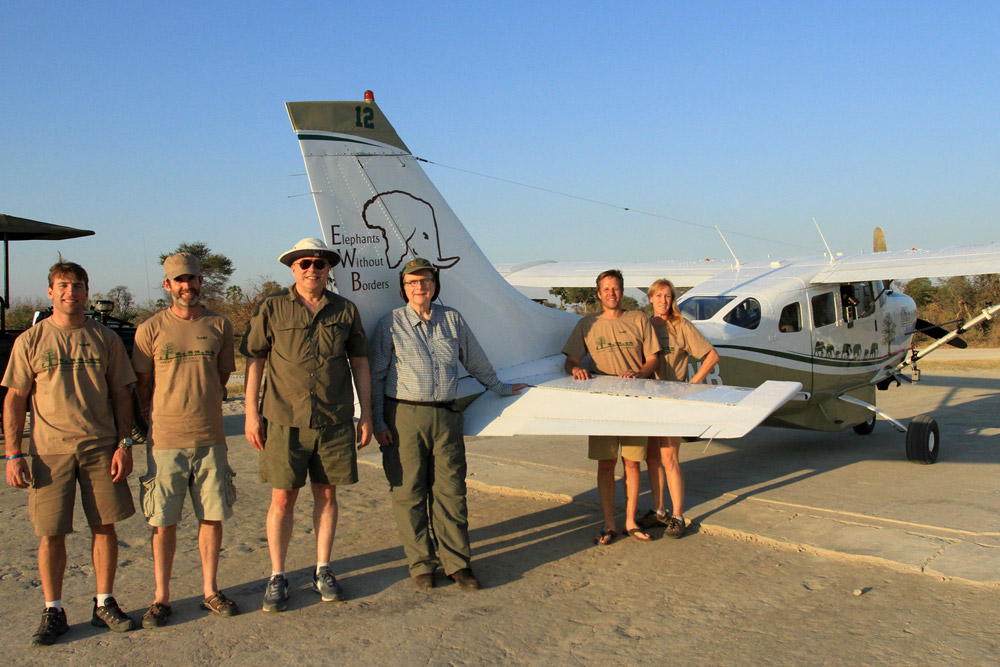
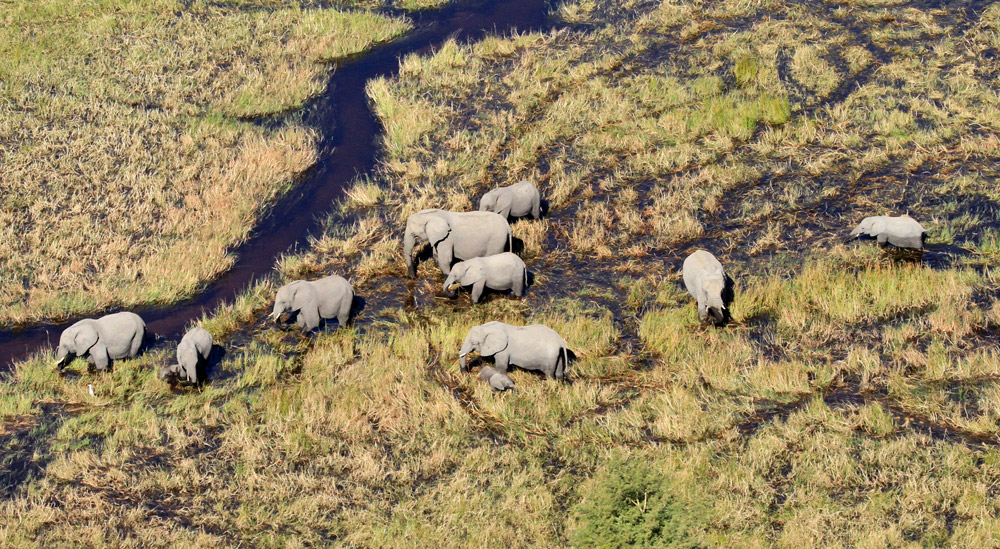
An elephant family in Chobe’s Okavango Delta. ©EWB
Safe passage across political boundaries is key to the future of elephants
In 2014, EWB took on its most challenging project yet – a pan-African survey of savannah elephants spanning 18 countries and covering 80% of their rangeland. Funded by Microsoft co-founder Paul Allan, the Great Elephant Census involves 50 scientists, African governments, and NGOs, totting up to 600,000 km of aerial transects. Although impressive in scale, the $8 million project has excluded forest elephants which are notoriously difficult to count, giving an incomplete picture of the African elephant story. Some conservationists question whether the census is the best application for $8 million of donor funding and say the data must have management applicability. Chase says the goal is to use the data to marshal conservation efforts across Africa; a continental elephant management strategy would be ideal.
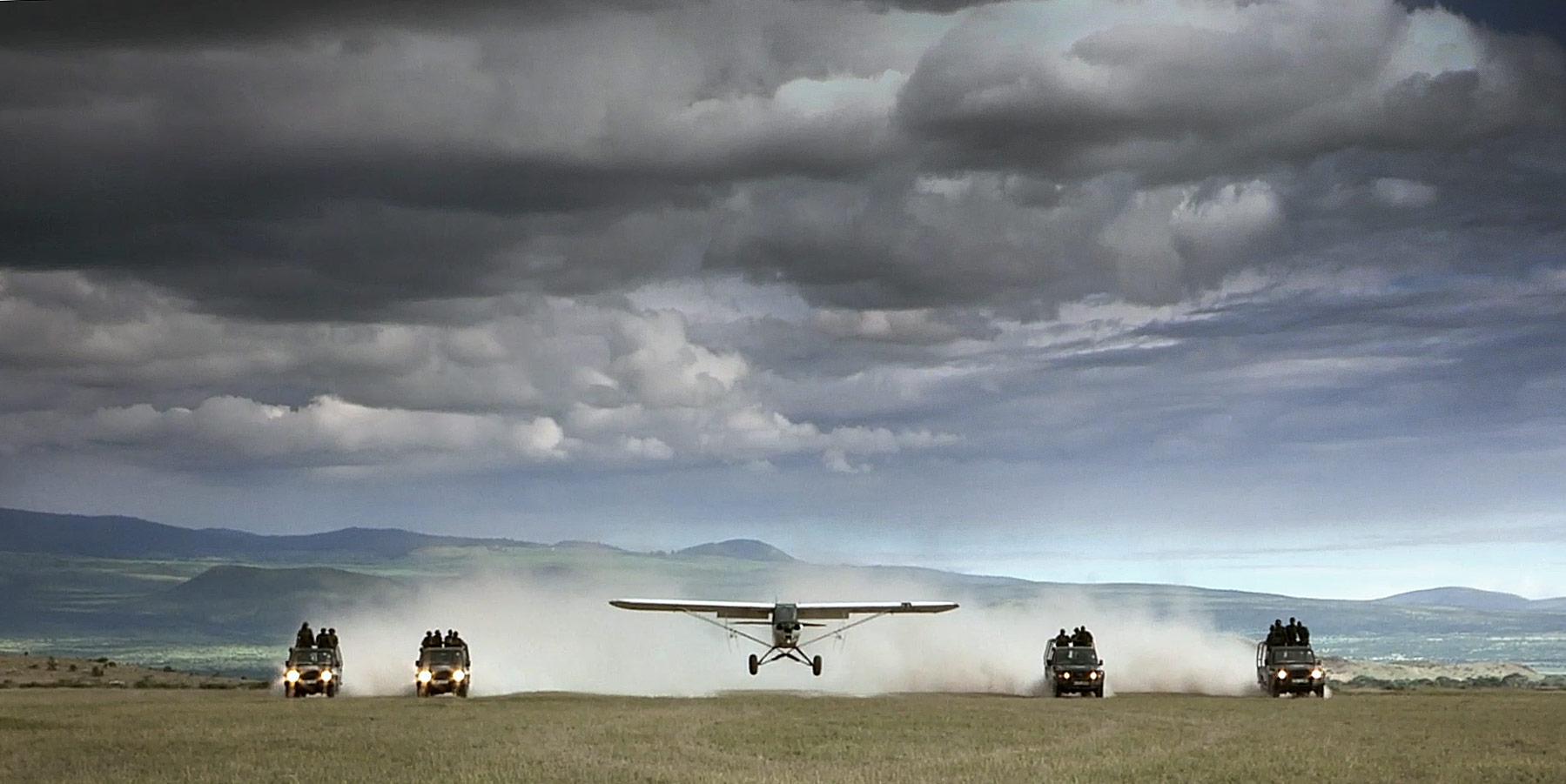
The Anti-Poachers
No one is closer to the coal face than the anti-poaching ranger – and no one more subject to its dangers. Over the last decade, over 1,000 rangers have lost their lives in the field, mostly to elephant poachers. As poaching becomes more militarized, many donors have been keen to fund sophisticated weaponry and aerial drones. But in reality, old-fashioned boots on the ground (supplemented by expert bush pilots) have proven the most effective. There is no silver bullet to ensure anti-poaching success. It takes hard work, training, discipline, and good ground intelligence based on trust with local communities.
Big Life is a dedicated anti-poaching initiative in Kenya’s Amboseli-Tsavo region that impresses philanthropists. Founded by English photographer Nick Brandt in partnership with Kenyan Richard Bonham, it is the first outfit to achieve coordinated cross-border operations between Kenya and Tanzania. Brandt has long celebrated Amboseli’s magnificent tuskers in stirring images that have captivated global audiences. But during a visit to the National Park in 2009, he was horrified to discover that poachers had killed many of the elephants he photographed. The other shock was the dearth of rangers and the inability to pursue poachers across the border into Tanzania. “Clearly, what was needed was teams of rangers on both sides of the border working in close communication,” he says. “It was obvious, but no one was doing this.”


Veterinary operations are also performed under the banner of Big Life. ©Jeremy Goss/Big Life
“If you don’t have the local community on your side, you’re screwed”
Within five months of Big Life’s inception, it established 12 anti-poaching outposts, bought nine anti-poaching patrol vehicles, recruited platoon commanders and a training instructor to oversee 85 rangers, acquired a microlight for aerial monitoring, brought in tracker dogs and established an informer network on both sides of the border. In no time, Big Life had broken up the worst of the poaching gangs operating in the Amboseli region. Says Brandt: “You have to have your leader on the ground to see, direct and coordinate operations first-hand, to marshall resources and to have an open door and ear to the local community. If you don’t have the local community on your side, you’re screwed.”
Since 2010, Big Life’s rangers have made 1,790 arrests and confiscated over 3,000 weapons and poaching tools. Today the NGO employs 315 rangers at 31 outposts in the region, protecting 800,000 hectares of wilderness that support 2,000 elephants. Big Life’s teams now apprehend poachers almost every time they kill an animal. But Brandt says that Big Life is doing far more than anti-poaching, with human-wildlife conflict a major area of focus. With its clear agenda and focused action, Big Life is clearly a model to replicate.
The Grassroots NGOs
Generally, organisations working closest to the ground use donor funds the most sparingly. Some of the most effective, in terms of bang for donor dollar, are lean local NGOs staffed by dedicated, lowly-paid people, working tirelessly to protect wildlife in rough or dangerous circumstances.
In 2005, Zimbabwe’s flagship Hwange National Park had a devastating drought. The National Parks and Wildlife Authority, suffering from the economic collapse in the country, had no funds to keep borehole pumps going to fill the park’s waterholes and thousands of animals were dying of thirst. Hwange lies in a transition zone between desert and savannah woodlands and has virtually no natural water. When it was first proclaimed a National Park in 1928, fewer than 1,000 elephants remained. In a bid to establish Hwange as a wildlife haven, founding warden Ted Davidson drilled dozens of boreholes and established 60 pans. As long as the pans remained filled, the wildlife would be sustained during the dry winter season. But with the pans dry, the 2005 winter looked set for disaster.
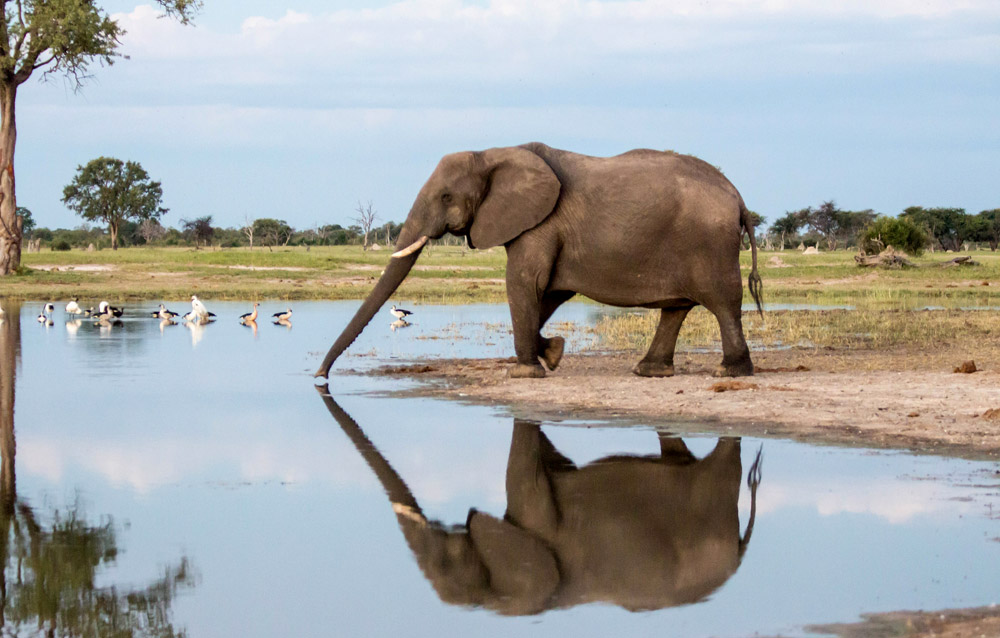
©Bruce Monroe
A small band of concerned Zimbabweans averted a crisis
A small band of concerned Zimbabweans sprang into action and bought enough diesel to get ten borehole pumps going again. That simple act averted the crisis. Since then, Friends of Hwange has kept up the good work, buying diesel and maintaining ten waterholes in the park. Today Hwange supports over 22,000 elephants, thanks in part to this small NGO comprising a handful of committed people.
This illustrates what focused efforts on the ground can achieve without millions of dollars and global campaigns. However, there is another side to the Hwange story. The artificial water supply has fuelled a huge rise in the park’s elephant population, and the consequent destruction of habitat is drastically impacting other wildlife. The ever-full waterholes attract elephants that would normally only be there in the rainy season. Such is the paradox facing elephant conservation in Africa – numbers plummeting in most regions while Chobe in Botswana and Hwange in Zimbabwe seem to have too many.
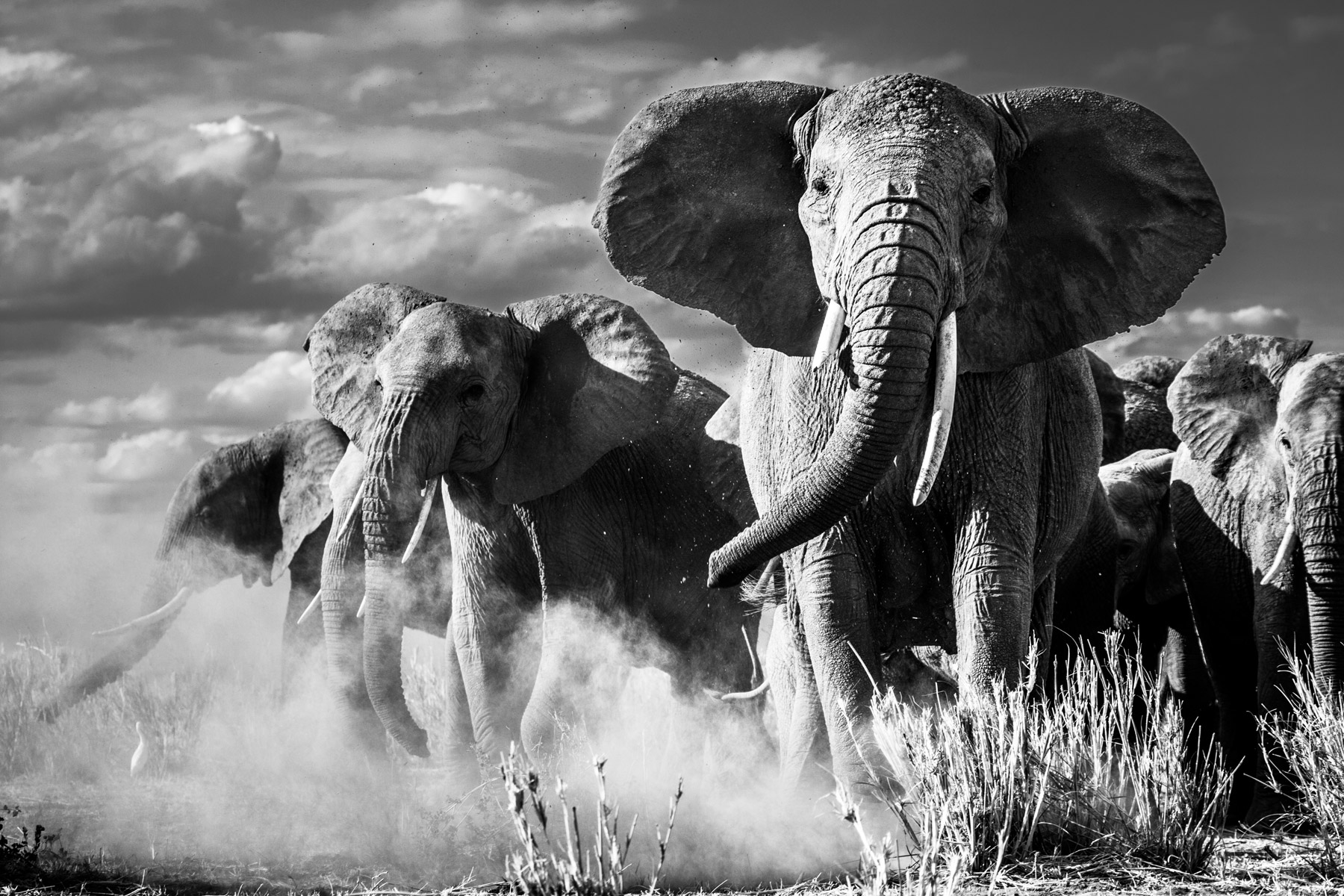
The Advocates
Small NGOs are busting their guts all over Africa, trying to expose the corruption inherent in wildlife poaching and trafficking. By shining a light on criminal syndicates, corrupt government officials and those in the criminal justice system, they can often score gains that anti-poaching field units cannot.
Naftali Honig is a man on such a mission. His small organisation, PALF (Project for the Application of Law for Fauna), based in Congo’s Brazzaville, investigates wildlife crimes, helps secure arrests and lobbies Congo’s judicial sector into jailing the culprits. Against almost insurmountable odds, PALF is succeeding. In 2013, an ivory poaching kingpin was jailed for five years, a sentence previously unheard of in Congo. Since then, PALF has helped secure several ivory busts and arrests. Naftali and his small team follow every step of the judicial process, lobbying the media, politicians and civil society and attending court cases to ensure due process is followed. It takes unshakeable resolve to achieve this, but not huge quantities of funds.
In Tanzania, the UK-based Environmental Investigation Agency (EIA) is shining a light on the Government corruption fuelling its massive poaching industry. Nearly half of Africa’s annual ivory haul is thought to hail from Tanzania, with its elephant population plummeting from 109,000 in 2009 to less than 70,000 today. Vanishing Point, the EIA’s pull-no-punches report published in November 2014, details how Chinese-led criminal gangs conspired with corrupt Tanzanian officials to move huge amounts of ivory out of the country. Tanzania vehemently denies the allegations, but the Government is under the spotlight and struggling to avoid international censure. EIA’s executive director, Mary Rice, is also trying to change international laws and government policies.
NGOs such as these eschew flash offices and business class travel, work on frugal budgets, and often perform dangerous undercover investigative work. Although small and unassuming, both PALF and EIA’s successes are on the radar screens of global philanthropists.
Dr Ian Douglas-Hamilton exemplifies the genre of zoologists who have migrated from the field to the global advocacy platform. In the 1970s, he conducted the first pan-African elephant survey and was the first to alert the world to the ivory poaching crisis that halved Africa’s elephant population in the 1980s. Under the banner of his NGO, Save the Elephants, he has spent 30 years lobbying for elephants on global platforms, including addressing the US Senate’s Foreign Relations Committee on Ivory and Security in 2012 and attending White House meetings that fed into Obama’s 2013 Executive Order on Combatting Wildlife Trafficking.

©PALF
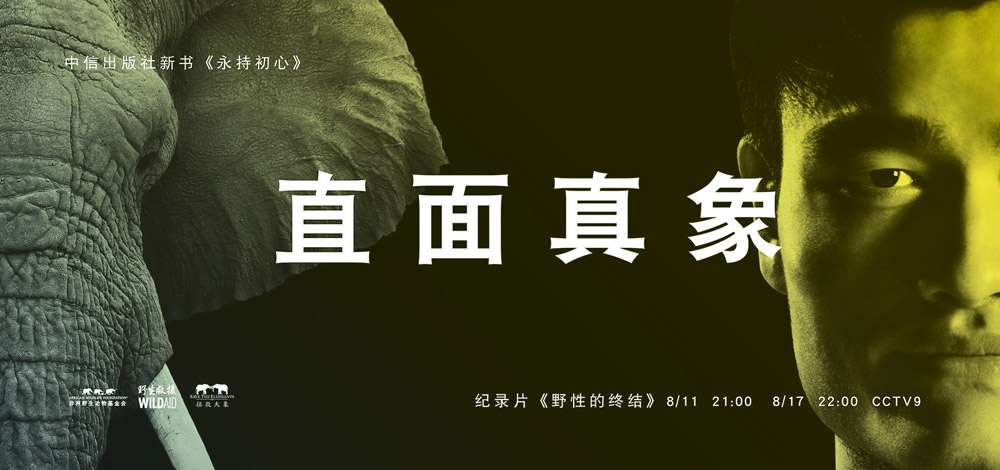
©WildAid
“When the buying stops, the killing can too”
Other NGOs are committed to combatting the demand for ivory in the East. The WildAid media campaign makes waves with popular Asian celebrities conveying its powerful message: “When the Buying Stops, the Killing Can Too”. However, proponents of the ivory trade claim that for Africans to conserve elephants, economic value is needed. Dr John Hanks, former CEO of WWF SA and Peace Parks Foundation: “Campaigns to eliminate consumptive use of wildlife are well-meaning, but they ignore the realities of poverty in Africa, human-wildlife conflict and the underfunding of protected areas. Unless local people and their national governments want to conserve wildlife, it will not survive.”
Over the next three years, hundreds of millions of dollars will pour into elephant conservation, some of it misguided and frittered away, with little concrete outcome. What is heartening, though, is the increasing demand for results, with foundations and government agencies insisting on detailed objectives, strategies and outcomes before parting with funds. The smart money is demanding accountability from donor recipients and has realised that often the most effective outcomes lie in the hands of dedicated, low-key people, working exhaustive hours in the field or in scruffy offices. With so much money and the future of Africa’s elephants at stake, donors and recipients must be held firmly accountable. This is not the time for glib marketing campaigns or gratuitous gloom and doom. It is the time for facts and focus.
Featured NGOs:
African Parks
Big Life Foundation
Elephants Without Borders
Environmental Investigation Agency
Friends of Hwange
PALF
Save the Elephants
Wild Aid
Wildlife Conservation Society
World Wide Fund for Nature
Disclaimer:
As previous manager of Nedbank’s green affinity programme in partnership with WWF SA, and previous marketing and philanthropy director for African Parks, Author Jane Edge is well informed. Still, she does not work for or receive fees from these or any organisation that could benefit from the publication of this article. Many other NGOs do valuable conservation work in Africa; the philanthropy community respects all the organisations featured here.
More about the author.
Contributors
 JANE EDGE is a former environmental journalist who cut her teeth reporting on the elephant and rhino poaching crisis in the 1980s. She subsequently became a director of Phinda Resource Reserve, communications director of CC Africa (now &Beyond), and manager of Nedbank’s green affinity programme in partnership with WWF SA. She was the marketing and philanthropy director for African Parks before leaving in late 2014 to establish her consultancy, Afrothropic. She has also served on the board of Fair Trade Tourism, where she was acting general manager for a period.
JANE EDGE is a former environmental journalist who cut her teeth reporting on the elephant and rhino poaching crisis in the 1980s. She subsequently became a director of Phinda Resource Reserve, communications director of CC Africa (now &Beyond), and manager of Nedbank’s green affinity programme in partnership with WWF SA. She was the marketing and philanthropy director for African Parks before leaving in late 2014 to establish her consultancy, Afrothropic. She has also served on the board of Fair Trade Tourism, where she was acting general manager for a period.
To comment on this story: Login (or sign up) to our app here - it's a troll-free safe place 🙂.![]()






